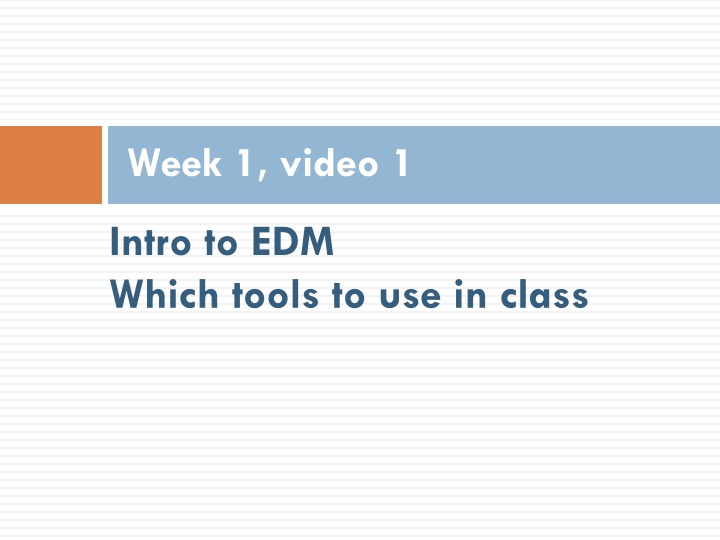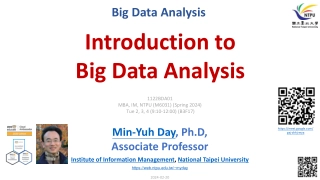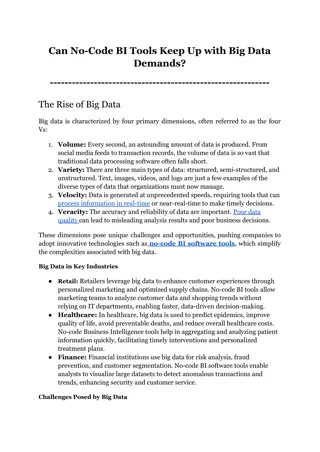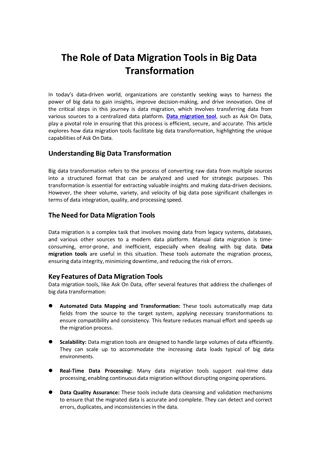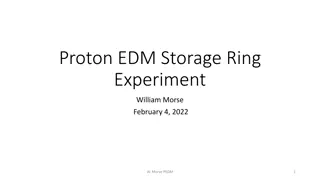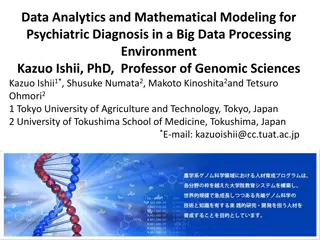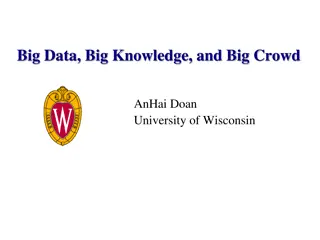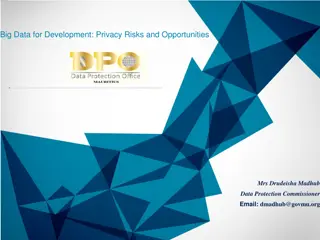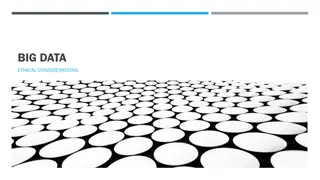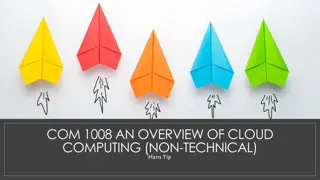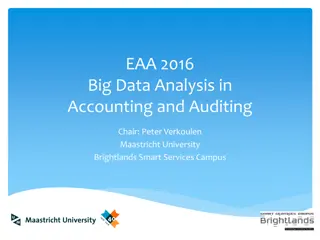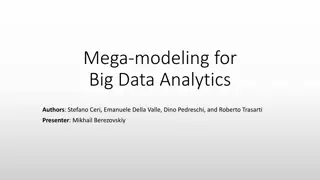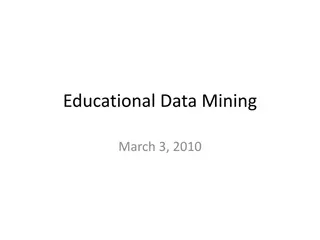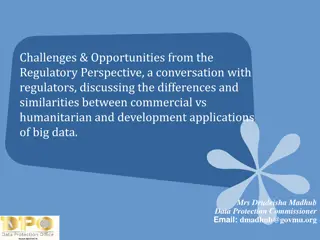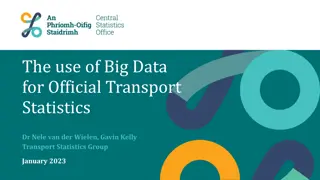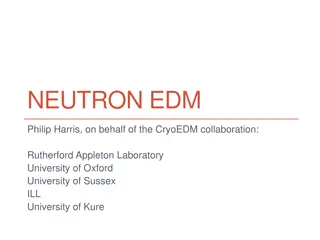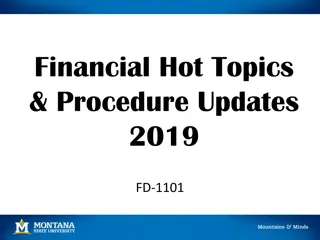Intro to EDM Tools for Big Data in Education
This course delves into the methods and open questions related to big data in education, offering both classic and fast-emerging methods. Join to explore key problems and advancements in the field!
Uploaded on Mar 02, 2025 | 1 Views
Download Presentation

Please find below an Image/Link to download the presentation.
The content on the website is provided AS IS for your information and personal use only. It may not be sold, licensed, or shared on other websites without obtaining consent from the author.If you encounter any issues during the download, it is possible that the publisher has removed the file from their server.
You are allowed to download the files provided on this website for personal or commercial use, subject to the condition that they are used lawfully. All files are the property of their respective owners.
The content on the website is provided AS IS for your information and personal use only. It may not be sold, licensed, or shared on other websites without obtaining consent from the author.
E N D
Presentation Transcript
Week 1, video 1 Intro to EDM Which tools to use in class
This textbook In this MOOC, you ll learn methods used for exploring big data in education
Two communities International Educational Data Mining Society First event: EDM workshop in 2005 (at AAAI) First conference: EDM2008 Publishing JEDM since 2009 Society for Learning Analytics Research First conference: LAK2011 Journal of Learning Analytics (founded 2012)
Two communities Joint goal of exploring the big data now available on learners and learning To promote New scientific discoveries & to advance learning sciences Better assessment of learners along multiple dimensions Social, cognitive, emotional, meta-cognitive, etc. Better real-time support for learners Adaptive learning systems Actionable information for teachers and other school personnel
What this course is about This course is about the key problems, methods, and open questions in the field You ll learn both classic methods and emerging methods and some of them are emerging fast
Where were at This course is now in its 7th edition/10th anniversary edition It s been amazing to watch all the changes that have happened in these years, and it s been a great privilege to have had the opportunity to have been part of some of them The hardest part has been keeping this course close to current, when things are moving so fast
Where do methods come from? Some of the methods would be familiar to someone with a background in Data Mining or Machine Learning Some of the methods would be familiar to someone with a background in Psychometrics or traditional Statistics You don t have to have either of these backgrounds to get something out of the course Pick and choose what you find most useful Over the years, the students who have gotten the most out of this course are the ones who focus in on what they find most useful
What makes data big? Laney (2000) The Three Vs Volume How much total data? Velocity How fast is data coming in? (and how fast do you have to handle it?) Variety Incompatible formats, non-aligned data structures, inconsistent data semantics
The fourth and fifth V Lots of folks want to tell you what the fourth or fifth V are, in order to get you to cite them Veracity Value Variability Visualization Validity Velociraptors
Is educational data big? Google PSLC DataShop Public domain image from https://pixabay.com/p-215119/?no_redirect
Not that big? But the name of the course is big data in education!
Not that big? But the name of the course is big data in education! Thanks to someone in marketing in 2013
Not that big? Big data in education is big Big by comparison to most classical education research Big compared to common data sets in many domains But it s not human genome project or google big
It is big enough That differences in r2 of 0.0019 routinely come up as statistically significant (Wang, Heffernan, & Beck, 2011; Wang & Heffernan, 2013)
I will talk about statistical significance Sometimes But it will not be a focus of the class
I will talk about statistical significance Sometimes But it will not be a focus of the class Also: statisticians note, terminology is sometimes conflicting between stats and data mining/machine learning I ll highlight particularly annoying cases where they emerge
Types of EDM/LA method (Baker & Siemens, 2014, 2022; building off of Baker & Yacef, 2009) Prediction Classification Regression Latent Knowledge Estimation Sequential Classifiers Structure Discovery Clustering Factor Analysis Domain Structure Discovery Network Analysis Epistemic Network Analysis Relationship mining Association rule mining Correlation mining Sequential pattern mining Causal data mining Visualization Discovery with models
Prediction Develop a model which can infer a single aspect of the data (predicted variable) from some combination of other aspects of the data (predictor variables) Which students are off-task? Which students will fail the class?
Structure Discovery Find structure and patterns in the data that emerge naturally No specific target or predictor variable
Relationship Mining Discover relationships between variables in a data set with many variables
Discovery with Models Pre-existing model (developed with EDM prediction methods or clustering or knowledge engineering) Applied to data and used as a component in another analysis
Closing thoughts EDM/LAK methods emerging for big data in education In this class, you ll learn the key methods and how to use them for Promoting scientific discovery Driving intervention and improvements in educational software and systems Strengths & weaknesses of methods for different applications Is your analysis trustworthy? Is it applicable?
